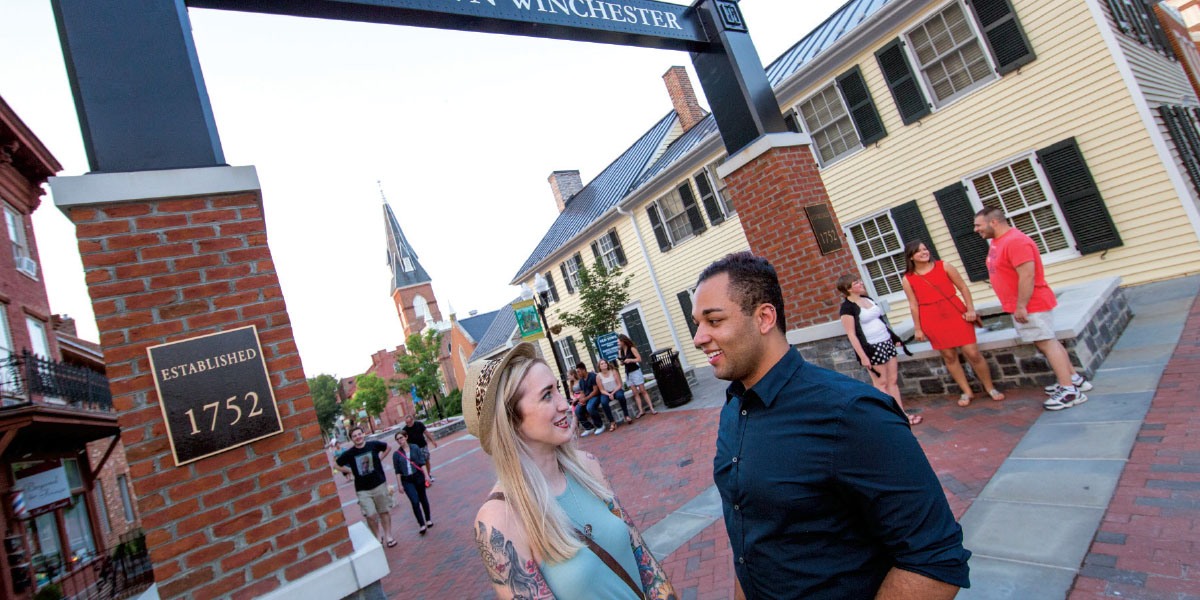Despite Moody’s upgrade of the higher education sector in the summer of 2015, colleges and universities are still adapting to their new reality of doing more with fewer resources. The decrease in state funding and the pressure to keep tuition costs in check continue to create challenges for the chief business officer. These market dynamics have forced higher education leaders to prioritize their spending for academic programs and university operations. Meanwhile, capital projects and other improvements are moved to the bottom of the list. As a result, many planned capital projects were put on hold or delayed indefinitely.
As the economic recovery continues, these projects are now being reconsidered, but in the context of completely different economic circumstances than those in years past. College and university senior leaders are now much less willing to tap into their institutional debt capacity to fund improvements, a trend that has forced business officers to become more creative in the ways that they fund projects.
More than ever, schools are receptive to the idea of bringing in partners. The growth in public-private partnership (P3) transactions (in which a business relationship between private and public sectors is used to finance, build, and operate projects) has created a major opportunity for institutions, and new P3 models have started to emerge that include the use of state and federal tax credits. (For details about traditional P3s, read “Power Partnerships” in June 2015 Business Officer.)
A review of institutions across the country suggests that colleges and universities may not be taking full advantage of potential tax credits for eligible projects and may be leaving as much as $1 billion in tax credits on the table.
As business officers look for alternative ways to finance capital projects, many have begun to explore various state and federal tax credit programs that can help bridge the funding gap. Specific examples of tax credits and other options described in this article demonstrate the challenges and benefits of these methods of project funding.
Tax Credit Programs
State and federal agencies enacted tax credit programs as a way to encourage private investment in projects that provide a public benefit. For example, the Federal Historic Preservation Tax Incentive Program was enacted in 1976 as part of the Tax Reform Act of 1976; the first project was certified in 1977. Such programs are accomplished by raising private capital for financing, when other public and private funding sources are insufficient or not available. The programs are designed to attract private investment to specific causes such as historic preservation, underserved communities, and energy efficiency.
Many higher education institutions are fortunate to meet the conditions or own assets that are eligible for such tax credit programs. However, some institution leaders may be reluctant to take advantage of such state credits, thinking that by doing so they are double dipping into state funding sources. Tax credits may be more palatable for private schools, since they typically don’t rely on state funds for operations. (Both public and private institutions are included in this article.)
To use tax credit financing, universities apply for and secure eligible tax credits that can be monetized to raise project equity. Investors receive the tax credits to reduce their overall tax liability for a set period of time. University projects are attractive to investors because individuals receive the satisfaction of helping an institution, while enjoying the financial benefits of the tax credit. In addition, the investor has confidence that the project will be managed by a strong sponsor.
Options and Obligations
Some tax credits are particularly suited for college and university capital projects.
Federal historic tax credits. Sometimes referred to as HTCs, these credits provide a 20 percent tax credit against eligible costs incurred in the authorized rehabilitation of a certified historic structure. Eligible buildings must be either (1) individually listed on the National Register of Historic Places or (2) a contributing building in a National Register historic district. The renovation must also follow the Secretary of the Interior’s Standards of Rehabilitation, and costs eligible for the HTC generally include renovation costs as well as related soft costs such as design fees.
Even though most schools are nonprofit and don’t pay taxes, a legal structure can be established that allows a project sponsor to allocate to a third-party investor the tax credits generated by a historic renovation in exchange for an equity investment. This equity can be used to cover project costs or for other purposes. Typically, a school can expect to net between 15 to 18 percent in total eligible project costs by using the HTC. There is no per-project cap or competition to use these tax credits, so a project sponsor is in complete control as to whether the project qualifies for such treatment.
In certain instances, however, there are program requirements in terms of tax-exempt use that may prevent the use of HTCs by schools. Projects such as those for residential use; buildings that are used or occupied in part by third-parties (arenas, stadiums, student unions, and so on); and historic buildings acquired by schools prior to renovation are examples of strong candidates for use of the HTC program.
State tax credits. Numerous states have also enacted a variety of tax credit programs. Thirty-five states have created their own historic tax credits similar to those of the federal program, while some states have created programs and other economic development–related tax credits. (For details about state tax credit programs, see www.novoco.com/historic/htc/state_programs.php.)
States generally allow project sponsors to pair state credits with applicable federal credits. Each state HTC program is unique, and the credit amount ranges from 5 to 25 percent of eligible expense. Some programs have statewide caps, while others do not.
Following are some examples of university capital projects funded in part by tax credits.
Refurbishing a Famous Fieldhouse
Butler University, Indianapolis, made use of federal historic preservation tax credits to fund 14 percent of its Hinkle Fieldhouse renovation. Built in 1928, the Hinkle Fieldhouse is a basketball arena on Butler’s Fairview campus. Despite undergoing many small renovations over time, the facility was in great need of modernization. Given the building’s history and importance to Butler—and to the state of Indiana’s strong basketball tradition—the university explored ways to renovate and modernize the facility while maintaining its character and historical significance.
Working with architects, Butler leadership developed a $36 million plan for the field house’s full renovation and modernization. The project factored in improved ADA accessibility, additional restrooms, expanded concessions, improved seating, a new score board, a student-athlete academic center, and improvements to the exterior brick and glazing.
Multiple funding methods. The original intent for funding was to raise money for the renovations through a capital campaign, and then fund the balance through the issuance of nontaxable debt. In 2011, the university applied for the National Park Service’s Save America’s Treasures Grant that would provide $1.6 million in funding for external renovations to be completed, while the capital campaign was in progress.
Throughout the planning process and capital campaign, Bruce Arick, Butler’s vice president for finance, was approached by various individuals about exploring Federal Historic Preservation Tax credits to help fund the project. Arick initially dismissed the idea, given its complexity and the already launched capital campaign. “However,” says Arick, “the inquiries about the use of tax credits persisted enough so that during bond consultation for the project, I asked our financial adviser and bond council more about them. Upon review, we determined that the tax credit idea was worth exploring, since the first step was essentially completed from our work on the America’s treasures grant.”
Some tricky timing. Working with consultants, the university applied for the tax credits and proceeded with the project. The business office set up an entity so that the Hinkle Fieldhouse was taxable, complying with the requirements of the tax credit program. However, in 2013, as the university sought tax credit investors, the market had essentially frozen, while investors waited for the Internal Revenue Service to issue new guidance for third-party investment in tax credits.
In late 2013, IRS guidance was issued and the tax credit syndicators were able to pursue investors. The university closed on the tax credit investments on Oct. 1, 2014.
Positive resolution. Once this hurdle was surmounted, the project was still not without its challenges. “The tax credit process is time-consuming and not intuitive,” admits Arick, who recommends that universities hire seasoned historic preservation professionals and legal counsel to help with the application process and financing structure. “The use of historic tax credits for the Hinkle Fieldhouse,” explains Arick, “was by far the most complicated financing transaction the university has ever undertaken. However, the process is definitely worth exploring, if the credits can make enough of a difference in your institution’s project financing.”
Revitalization Adds Residences
Shenandoah University (SU), Winchester, Va., used federal and State of Virginia historic preservation tax credits to raise 38 percent of the equity needed for the adaptive reuse of a historic downtown property for student housing.
With the university’s need for additional student housing, the City of Winchester urged Shenandoah to consider developing vacant or underutilized downtown properties as part of the city’s revitalization efforts. The historic Solenberger and Co. hardware building was one of the potential properties. The university entertained the idea of redeveloping properties to house students, and was contacted by the Solenberger building’s owner, who urged the use of historic preservation tax credits for the renovations.
After further exploring the use of tax credits, the university calculated that the project would be cash positive, with the additional benefit of supporting the city’s downtown revitalization efforts. Shenandoah purchased the property and renovated the facility to contain housing for 26 graduate students in 11 apartments, and additional ground floor commercial space.
The $3.5 million project used $1.56 million in federal and state tax credits to net $1.3 million in project equity, after discounts and projected payouts to the investors. Given the university’s nonprofit status, four taxable corporations were set up to accommodate the transactions. Tax credit consulting firm Brian Wishneff and Associates helped market the tax credits as well as the project itself, since the company viewed this as a way for people to support the university. Most of the tax credits were syndicated to friends of the university at a discount less than that usually seen in the marketplace. According to Richard Shickle, Shenandoah’s vice president for administration and finance, most of the investors would not have sought out tax credits had it not been for SU’s active marketing efforts.
Similar to Butler University’s project, the Solenberger Hall transaction was complicated but worth pursuing, due to the realized benefits. According to Shickle, “The biggest challenges were (1) creating a structure in which a nonprofit organization can benefit from the tax credits and (2) arranging for the additional consultants and legal counsel to assist with filing the application and reviewing the legal documents.” In addition, there was extra bookkeeping work and tax returns that needed to be submitted with the credits. “Despite the added expense and effort,” says Shickle, “we would absolutely use them again if the opportunity presented itself.”
Giving a Landmark New Life
Built in the late 1920s as the headquarters for the American Insurance Co., the 15 Washington Building is a key feature in Newark’s skyline. Home to various tenants over the years, the building came under the control of Rutgers University, Newark, N.J.—in the late 1970s and housed the law school and other academic departments. The law school relocated in 1999 because of the insurmountable deferred maintenance costs necessary to keep the building operational. Plans for a hotel and conference center failed to materialize, and the building sat vacant from 1999 to 2014, when its transformation to graduate student housing began.
Faced with growing enrollment and demand for additional student housing on the Newark campus, university administrators identified 15 Washington as a potential location for a graduate residential community, as part of a 2011 master plan for housing. As design of the building progressed, it quickly became clear that the project’s budget was growing to a point at which rents would no longer be affordable to students. After numerous value-engineering exercises and machinations regarding the building’s unit mix, the project still proved to be financially unfeasible.
The university, working with New Brunswick Development Corp. (DEVCO), began exploring the use of alternative financing methods to help fund the $85 million project budget. DEVCO is a nonprofit developer that specializes in the use of various state and federal incentive programs for difficult-to-finance public-private partnerships in New Jersey. After careful consideration, university officials determined that the use of federal and state historic tax credits would not be worth pursuing, given the availability of other state incentives.
To finance the 333-bed residential and academic building, the university and DEVCO instead used $23 million in New Jersey Economic Redevelopment and Growth Program tax credits; $10.75 million in state education bonds (HEFT and CIF programs); and a $58 million tax-exempt debt mortgage issued through the New Jersey Economic Development Authority.
To structure the complex deal, the university agreed to sell the building to DEVCO, yet retain ownership in the condominiums of the nonresidential spaces within the building. DEVCO took the lead on redeveloping the building, while Rutgers assumed its operations and maintenance. Rutgers agreed to then repurchase the building from DEVCO no later than 15 years after the project’s completion.
Renovations began in 2014 with occupancy slated for September 2015. As of August 2015, the building is 100 percent pre-leased. The project is a huge success for not only Rutgers but the Newark community as a whole. The preservation of a signature landmark directly across from Washington Park will further stabilize the northern section of campus and downtown Newark, further establishing Rutgers University-Newark as an anchor institution in the city. “Without the apportionment of tax credits,” explains Antonio Calcado, Rutgers vice president for facilities and capital planning, “it would have been impossible to return and repurpose this landmark building to its former glory.”
An Attractive, but Complex, Alternative
These case studies demonstrate that using tax credits and alternative financing is a creative way to bridge funding gaps for projects. As state subsidies continue to decrease, it is imperative for business officers to explore all means necessary to see needed projects develop. While the effort and expense required to take advantage of such programs is not insignificant, it could be the difference between a realized project and another plan on the shelf.
JEFFREY D. TURNER is senior vice president, and NICHOLAS M. GABEL is a project manager, Brailsford and Dunlavey Inc., Washington, D.C.; ERIK WISHNEFF is vice president and general counsel at Brian Wishneff and Associates, Arlington, Va.






